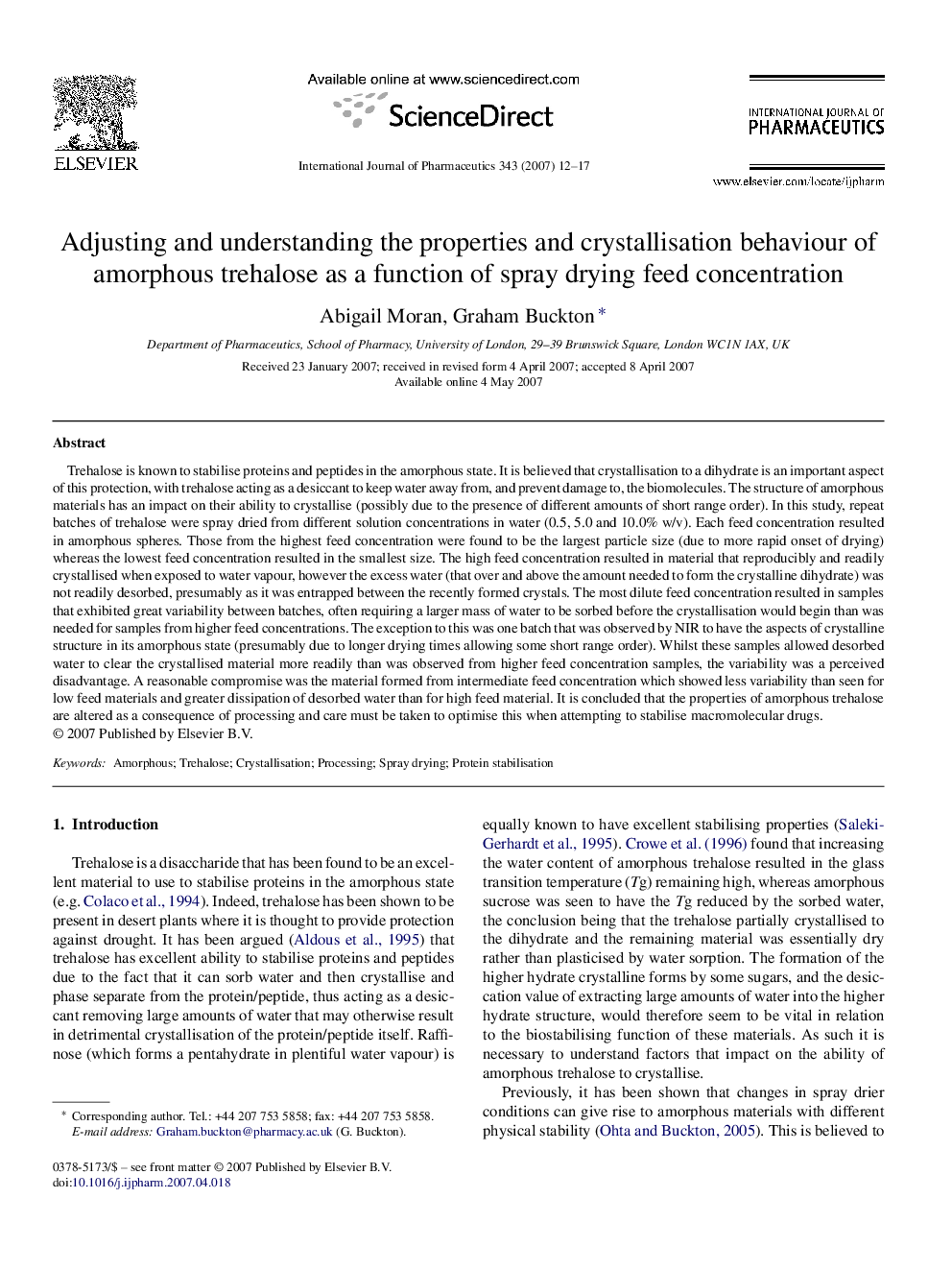| Article ID | Journal | Published Year | Pages | File Type |
|---|---|---|---|---|
| 2506000 | International Journal of Pharmaceutics | 2007 | 6 Pages |
Trehalose is known to stabilise proteins and peptides in the amorphous state. It is believed that crystallisation to a dihydrate is an important aspect of this protection, with trehalose acting as a desiccant to keep water away from, and prevent damage to, the biomolecules. The structure of amorphous materials has an impact on their ability to crystallise (possibly due to the presence of different amounts of short range order). In this study, repeat batches of trehalose were spray dried from different solution concentrations in water (0.5, 5.0 and 10.0% w/v). Each feed concentration resulted in amorphous spheres. Those from the highest feed concentration were found to be the largest particle size (due to more rapid onset of drying) whereas the lowest feed concentration resulted in the smallest size. The high feed concentration resulted in material that reproducibly and readily crystallised when exposed to water vapour, however the excess water (that over and above the amount needed to form the crystalline dihydrate) was not readily desorbed, presumably as it was entrapped between the recently formed crystals. The most dilute feed concentration resulted in samples that exhibited great variability between batches, often requiring a larger mass of water to be sorbed before the crystallisation would begin than was needed for samples from higher feed concentrations. The exception to this was one batch that was observed by NIR to have the aspects of crystalline structure in its amorphous state (presumably due to longer drying times allowing some short range order). Whilst these samples allowed desorbed water to clear the crystallised material more readily than was observed from higher feed concentration samples, the variability was a perceived disadvantage. A reasonable compromise was the material formed from intermediate feed concentration which showed less variability than seen for low feed materials and greater dissipation of desorbed water than for high feed material. It is concluded that the properties of amorphous trehalose are altered as a consequence of processing and care must be taken to optimise this when attempting to stabilise macromolecular drugs.
